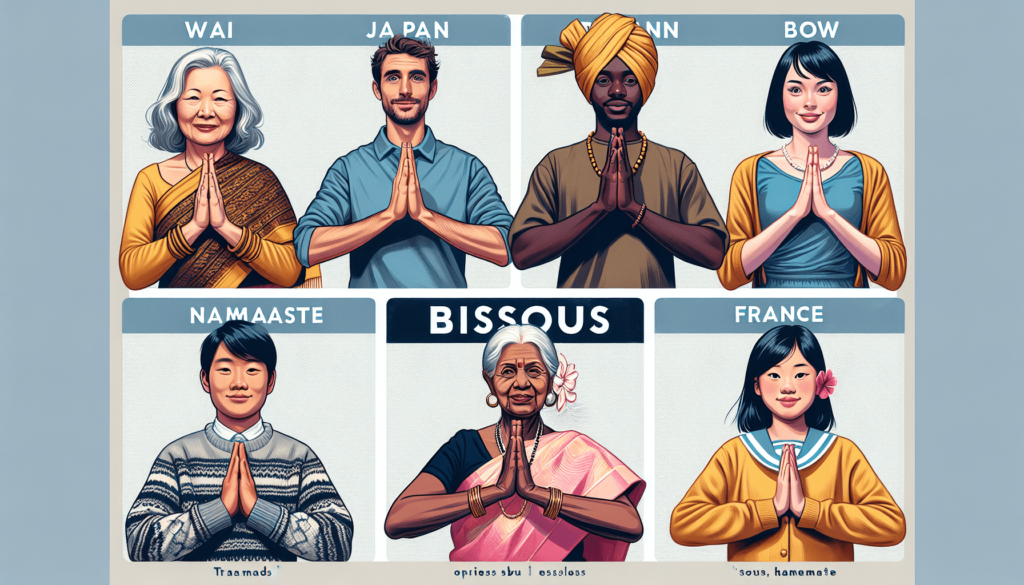Understanding Cultural Etiquette For Language Learners
As you embark on your journey to learn a new language, it is important to also understand the cultural etiquette that comes with it. Learning a new language goes beyond just pronunciation and grammar; it also involves understanding the customs, traditions, and social norms of the culture where the language is spoken. By familiarizing yourself with cultural etiquette, you can communicate more effectively and respectfully with native speakers. In this article, we will explore the importance of cultural etiquette for language learners and provide you with some essential tips to help you navigate social situations with confidence.

Why is Cultural Etiquette Important?
Cultural etiquette plays a crucial role in effective communication and building relationships with people from different cultural backgrounds. When you learn about the cultural norms and values of a particular society, you show respect for their traditions and beliefs. This, in turn, helps you avoid unintentional misunderstandings and potential conflicts. By observing cultural etiquette, you demonstrate your interest in and appreciation for the culture of the language you are learning.
Understanding Cultural Differences
Every culture has its own set of customs, traditions, and social norms that shape the way people interact with one another. For example, in some cultures, it is customary to greet others with a kiss on the cheek, while in other cultures, a handshake is more appropriate. Understanding these differences can help you navigate social situations with grace and avoid inadvertently causing offense. Take the time to research and learn about the cultural norms of the language you are learning so that you can adapt your behavior accordingly.
Nonverbal Communication
Nonverbal communication plays a significant role in intercultural interactions. Gestures, facial expressions, eye contact, and body language can convey messages that may differ from verbal communication. For example, nodding your head in some cultures signifies agreement, while in others, it may indicate confusion or disagreement. Be mindful of your nonverbal cues and observe how native speakers use them in different contexts. By paying attention to nonverbal communication, you can better understand the subtle nuances of cultural interactions.
Greetings and Introductions
Greetings and introductions vary across cultures, so it is essential to familiarize yourself with the appropriate customs. In some cultures, a formal greeting with titles and last names is expected, while in others, a casual wave or nod suffices. Learning how to greet and address people respectfully shows that you value their customs and helps create a positive first impression. Practice basic greetings in the language you are learning, and be open to corrections and feedback from native speakers.

Personal Space and Physical Contact
Personal space and physical contact boundaries differ from culture to culture. Some cultures have a more reserved approach to personal space, while others are more physically expressive. Be mindful of the cultural norms regarding personal space and physical contact when interacting with native speakers. Respect their boundaries and adjust your behavior accordingly to avoid making them uncomfortable. Remember that what may be acceptable in one culture can be perceived as intrusive in another.
| Personal Space | Cultural Norms |
|---|---|
| Close personal space | Some cultures prefer closer physical proximity during conversations and interactions |
| Distant personal space | Other cultures value more distance between individuals and may feel uncomfortable with close proximity |
Dining Etiquette
Dining etiquette is an essential aspect of many cultures and often reflects societal values and traditions. Familiarize yourself with the dining customs of the culture you are learning about to avoid unintentional faux pas. Be attentive to table manners, seating arrangements, and mealtime rituals. Pay attention to how food is served and consumed, and follow the lead of your hosts or companions. By showing respect for dining etiquette, you can participate in cultural experiences and connect with others through shared meals.
Gift Giving Customs
Gift giving customs vary widely across cultures and are often laden with symbolic meaning. When offering gifts in a foreign culture, it is crucial to understand the appropriate etiquette to avoid causing offense or misunderstanding. Research the custom of gift giving in the culture you are learning about, including what types of gifts are appropriate, how they should be wrapped, and when they should be presented. Remember that the act of gift giving is a gesture of goodwill and should be done with sincerity and respect.
Language Use and Formality
The use of language and formality levels can differ significantly from one culture to another. Some languages have formal and informal forms of address that reflect social hierarchies and relationships. Familiarize yourself with the appropriate level of formality when speaking to others in the language you are learning. Use titles, honorifics, or polite speech as required by the cultural norms. Pay attention to how native speakers address one another and follow their lead to demonstrate respect and courtesy.
Social Etiquette in Public Spaces
Navigating social interactions in public spaces requires an understanding of the cultural norms that govern behavior. Be aware of how people behave in public settings, such as parks, public transportation, or restaurants, and adapt your behavior accordingly. Respect queues, observe quiet zones, and follow local customs when in public spaces. By being considerate of others and following social etiquette, you can contribute to a harmonious and positive social environment.
Celebrations and Festivals
Participating in celebrations and festivals is a great way to immerse yourself in the culture and traditions of the language you are learning. Familiarize yourself with the significance and customs of various holidays and festivals to join in the festivities with confidence. Be respectful of local traditions, dress codes, and customs during celebrations. Engaging in cultural celebrations allows you to connect with others and gain a deeper understanding of the cultural values and practices of the community.
Seeking Guidance and Feedback
As you navigate the intricacies of cultural etiquette, do not hesitate to seek guidance and feedback from native speakers or cultural experts. Asking for advice and clarification shows your willingness to learn and adapt to unfamiliar customs. Listen attentively to suggestions and corrections, and use them as opportunities for growth and cultural understanding. Embrace the learning process with an open mind and a curiosity to explore new perspectives and experiences.
Conclusion
In conclusion, cultural etiquette is an essential aspect of language learning that fosters effective communication and respectful interactions with people from diverse backgrounds. By understanding and respecting the cultural norms of the language you are learning, you can navigate social situations with grace and confidence. Embrace the opportunity to immerse yourself in a new culture, and approach each interaction with an attitude of curiosity and respect. Remember that cultural etiquette is a journey of continuous learning and adaptation, so be open to new experiences and perspectives as you explore the fascinating world of language and culture.

